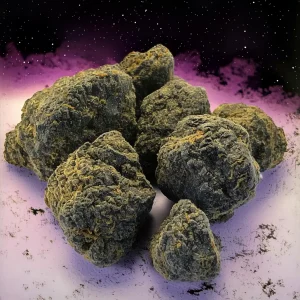If you’ve ever walked into a dispensary, chances are you’ve encountered two standout extracts: live resin and rosin. Both spotlight hemp-derived cannabinoids in concentrated form, and both bring a galaxy of flavor, texture, and terpene richness into your session. But even with similar looks, their differences run deep.
So, how do you decide between live resin vs rosin? That choice depends on what you want from your hemp experience. At JK Distro, we believe great hemp starts with transparency, grows through education, and meets you where you are. This guide breaks down how these extracts are made, what makes each one unique, and why both have earned a strong following. Because in our world, your routine deserves options that reflect your rhythm, and we’re here to help you find them.
Live resin and rosin may look similar in your dab rig or vape cart, but their impact can feel worlds apart. Below, we’ll explore how each one is used and what kind of experience it’s known to deliver.
Live resin is crafted using flash-frozen cannabis hemp flower, which helps preserve more of the plant’s original compounds. This method captures a rich range of terpenes and cannabinoids before any drying or curing happens. The result? A concentrate with vivid aroma, dynamic texture, and a depth that reflects the strain’s original profile.
This extract often finds its way into flavor-forward routines—think sessions centered around creativity, movement, or moments when bold aroma and complexity matter. You might notice notes of citrus, pine, earth, or fuel depending on the hemp strain used. And thanks to its full-spectrum nature, live resin remains a go-to for anyone who values richness, nuance, and variety in their hemp ritual.
Rosin skips the solvents entirely. Instead, cured flower or bubble hash is pressed with heat and pressure, giving you a thick, golden sap packed with cannabinoids and naturally occurring terpenes. Since rosin requires no additives or chemical processing, it’s often preferred by those looking for a cleaner, more direct option.
Additionally, rosin’s flexible format makes it easy to dab, vape, or use in homemade infusions. Depending on the starting material, rosin may highlight hemp-derived compounds like Delta 8 THC, CBD, or THCA Dabs. The final texture tends to be smooth and waxy, with earthy, nutty, or herbal notes that pair well with laid-back routines. For many fans, rosin delivers clarity in both production and experience—simple, solventless, and true to the plant.
Behind every scoop of live resin or press of rosin lies an extraction process that shapes the texture, aroma, and cannabinoid composition of the final product. Both methods are prized for preserving hemp-derived compounds and naturally occurring terpenes, but they take very different paths to get there. For businesses and content creators, exploring CBD affiliate programs can be an effective way to introduce these concentrates to wider audiences while earning commissions through trusted partnerships.
Live resin starts at harvest. As soon as the hemp flower is cut, it’s flash-frozen to preserve more of the plant’s original chemistry. Freezing immediately helps lock in cannabinoids and terpenes that might otherwise break down during drying or curing.
Next comes hydrocarbon extraction, which uses butane or propane to pull a broad range of hemp-derived compounds, including Delta 9 THC, THCA, and CBD, from the frozen flower. This method helps retain the strain’s original aroma and cannabinoid balance. The result is a dense, sticky concentrate often rich in citrus, fuel, or earthy notes, depending on the cultivar. For people who care about strain complexity and flavor-forward sessions, live resin delivers a terpene-packed option made to showcase the spectrum.
Rosin extraction skips freezing and solvents entirely. Instead, pressure and heat are applied to cured hemp flower or bubble hash, which presses out a golden, waxy sap. This method preserves the cannabinoids and terpenes without introducing additional processing steps—ideal for those who want a straightforward concentrate that stays true to its source.
The results depend on the quality of the starting material and the press technique. Some rosin batches offer a subtle aroma and firm texture; others highlight nutty, earthy, or herbaceous tones. Since no solvents are used, rosin often appeals to people who prioritize simplicity, transparency, and clean-handling products in their hemp experience.
Live resin and rosin each offer a different type of concentrate experience. While both feature high levels of hemp-derived cannabinoids, their extraction methods and terpene content influence how people tend to use them. Depending on your preferences and habits, one might naturally align with your daily rhythm or session goals.
Live resin is known for its vibrant aroma and broad cannabinoid spectrum. At JK Distro, our live resin features a total cannabinoid content of 96.6%, including 74% hemp-derived THCA. That profile reflects how carefully flash-frozen flower and hydrocarbon extraction can retain the plant’s natural compounds.
For those who seek complex terpene blends or want a concentrate that reflects the character of the original hemp strain, live resin fits easily into sessions built around exploration. Its dense, saucy consistency also makes it popular for dabbing or pairing with tools designed for rich, full-bodied concentrates.
JK Distro’s rosin is made with just heat and pressure, pressed from cured hemp flower or hash to retain purity without any added steps. Our rosin contains 90.07% total cannabinoids, including 62.11% hemp-derived THCA and 10.32% CBD, giving it a balanced composition that suits a wide range of routines.
Likewise, rosin’s clean texture and solventless format appeal to those who want a product that’s easy to handle and simple to incorporate into their day. It can be dabbed, vaped, or infused into DIY creations, and depending on the strain used, you might notice subtle shifts in aroma and consistency that reflect its natural source.
Live resin and rosin each have their strengths, but the right match depends on what you’re looking for in a hemp experience. Your goals, daily habits, and preferences all play a role, from flavor intensity to how you like to unwind after work. Below, we’ve broken down each extract that tends to resonate with users, so you can decide which one belongs in your stash.
You appreciate aroma-driven products that highlight each cultivar’s signature terpene blend.
At JK Distro, we see the choice between live resin and rosin as more than a debate over which is better. Each extract brings its strengths, and the best option depends on what you’re looking for. Some people lean toward bold flavors and full-spectrum intensity. Others want something simple, solventless, and smooth.
Regardless, both are valid paths to take, but what matters most is how the product fits into your daily routine. Our mission is to keep hemp products accessible, grounded in science, and rooted in care. No matter where you land, we’re here to help you feel better, live better, and explore the space in hemp wellness that speaks to you.
Read more:
Generally, live resin and rosin can both offer potent cannabinoid profiles, but the difference comes down to extraction methods and starting material. Live resin is extracted from fresh-frozen cannabis hemp plants, preserving terpenes and cannabinoids like hemp-derived Delta 9 THC, CBD, and THCA.
Rosin is made by applying heat and pressure, no solvents required, often to dried or fresh-frozen flower, kief, or hash. This “press-and-go” approach means rosin may capture a slightly different spectrum of cannabinoids and terpenes, but both can be out-of-this-world strong.
Yes! Both extracts work well with dab rigs and concentrate-friendly vaporizers. Their consistency may differ, as live resin is typically more saucy or sticky, while rosin is waxy and stable, but both formats are popular for session-based use. Just be sure your device is compatible with your chosen texture.
When made from hemp-derived cannabinoids, both live resin and rosin are federally legal under the 2018 Farm Bill, as long as they contain less than 0.3% Delta 9 THC by dry weight. However, laws can shift from state to state, so it’s always wise to check your local legal landscape before ordering or blasting off with new hemp products.
They can. Live resin’s moisture and terpene content may require cooler, airtight storage to maintain freshness. Rosin tends to be more shelf-stable thanks to its low-moisture format, but it also benefits from storage in a cool, dark place. For best results, store both properly and enjoy while fresh.
Rosin typically earns the “most natural” crown because it’s made using only heat and pressure. Live resin relies on hydrocarbon solvents (like butane) during extraction, but trusted producers like us use rigorous lab testing and purging to ensure residual solvents don’t stick around for the return trip.
Absolutely! Both formats can be vaporized using dab pens or devices compatible with concentrate textures. Live resin’s sticky consistency may require more careful handling, while rosin’s waxy form tends to hold its shape better in standard chambers.




Support cannabis rights with a donation. Your contribution funds legal challenges, awareness campaigns, and advocacy to keep cannabis accessible and legal. Stand up for our rights and the future of cannabis in Nationwide. Click for More info on the Hemp Litigation Fund.


Are you 21 or Older?
Please verify that you are 21 years of age or older to enter this site.
NO MINORS!